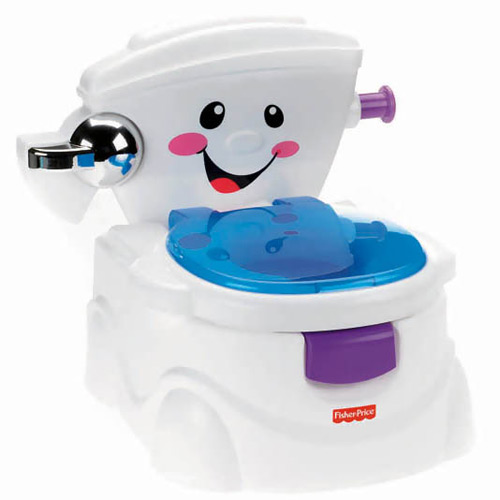I am exactly at this stage. Melissa, at 2 years and 3 months, is already showing signs that she wants to ditch the diaper! Hooray! Lol But how do you potty train and remove diapers without causing “psychological damage” to the child and parents? Potty training must have one rule above all: every child has their own timing, and that timing must be respected. Well, I read somewhere that children start showing signs, and with these signs, potty training becomes much easier. The signs start when the child can already run, jump, and their legs are strong. This is a sign that the pelvic muscles can also be controlled. Another sign that potty training can begin is when the child learns to ask, to say correctly what they want. Often, the diaper is dry in the morning, and that’s also a sign that removing the diaper may be a good idea, since bladder control is already developed.
Many children already know what the “toilet” is for, and then it’s a matter of time and patience for the parents. If not, then it’s time for parents to start introducing it, taking the child to the bathroom when they go is a big stimulus, and if the child has an older sibling, it’s even better! In the case of boys, dad can teach how to do it, pull out the penis and stand up. Children mirror and identify 100% with their parents, so illustrating with naturalness is a good idea and it becomes a unique moment.
How can removing the diaper be easier?
Nowadays there are potties on the market that can help, musical accessories that play a little tune when pee or poop falls in! Lol, cute and adorable, these cost around R$ 200.00. Of course, day care helps a lot in this process and seeing that their classmates are already using the potty really helps with the process. Potty training is a gratifying stage for moms and it should be presented as such to the child. Dancing, singing, and celebrating when the child pees or poops in the potty can make this moment fun and happy and help even more.
Peeing or pooping on the floor, bed, or couch is perfectly normal, even with good bladder control, sometimes they forget that they have to go to the bathroom. So, offering the child the bathroom from time to time can help lessen these incidents.
There are two types of potty training: partial and total. Many moms choose to leave the diaper on at night, while others remove it all at once. The secret to total potty training is a lot of patience, and even with partial training, when potty training is complete, the child should be taken to the potty or bathroom to pee, even while sleeping, and they really do go! Even today I take Dudu to the bathroom while he’s still sleepy, he walks there and pees just fine.
There isn’t a set age for potty training, and I had different ages with my kids, always observing and respecting their limits. Joana was completely out of diapers at 2 and a half, while Dudu was fully diaper-free at over 3! Melissa seems to be like Joana, and is already showing signs that she wants to stop using diapers. She gets uncomfortable with the idea of having pooped in her diaper and already asks to sit on the toilet and play.
There’s nothing wrong with going back a step, if potty training is causing stress to the child or parents, it’s okay to go back to diapers; it’s better for this transition to be peaceful when the child is mature for this important step. If that’s your case, there are training pants that look like underpants, they’re sold in children’s stores and supermarkets. Remember, the process should be as natural as possible, and respecting the child’s pace and limits is essential.
Is it time for your baby’s potty training? Then share your experience here! Leave your comment!
See also: Diaper rash in babies — how to prevent it
Photo: Lojas Americanas












